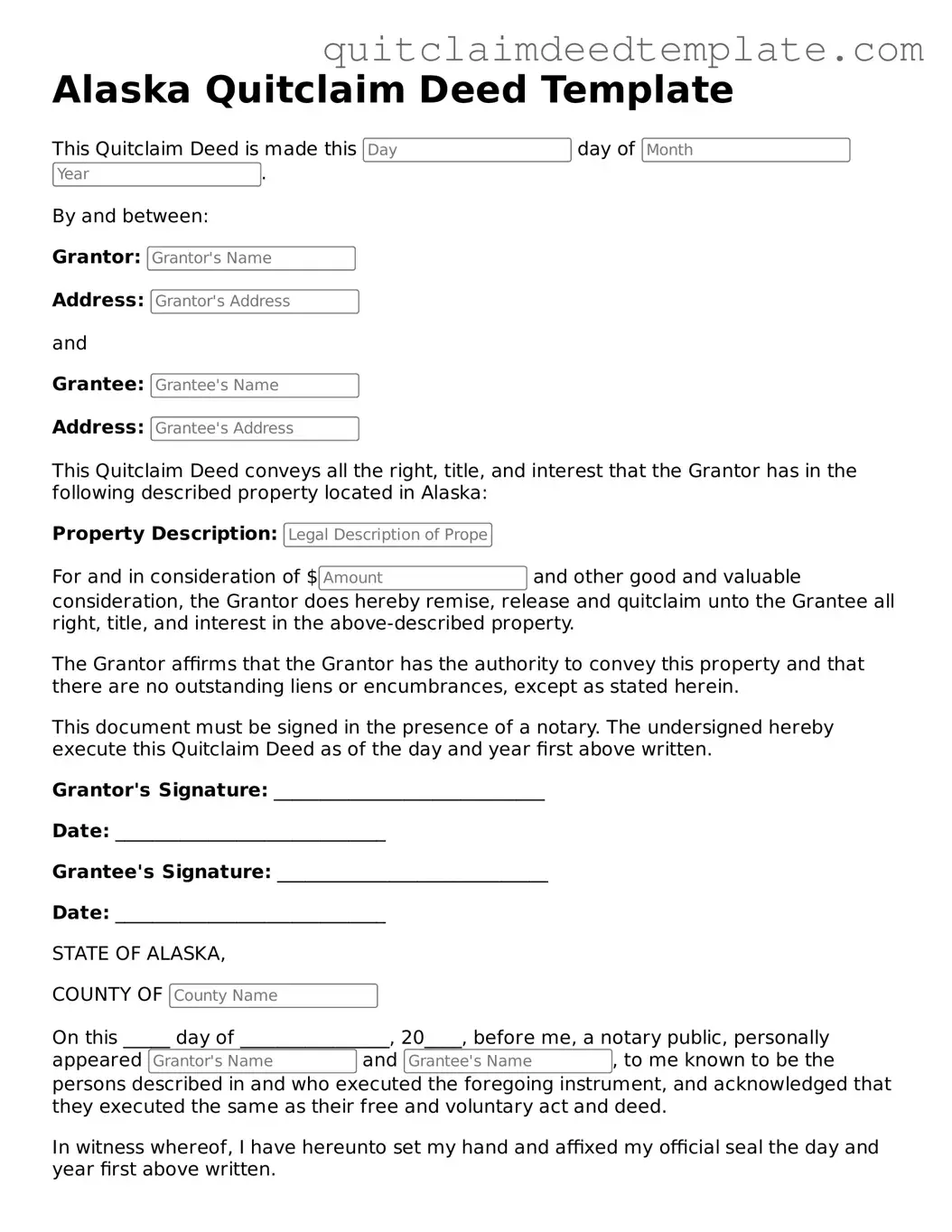Documents used along the form
When transferring property in Alaska, the Quitclaim Deed is a common document used to convey ownership. However, several other forms and documents often accompany it to ensure a smooth transaction. Below is a list of these essential documents, each serving a specific purpose in the property transfer process.
- Warranty Deed: This document guarantees that the seller has clear title to the property and will defend against any claims. It provides a higher level of protection for the buyer compared to a quitclaim deed.
- Title Search Report: A title search report outlines the history of the property’s ownership. It helps identify any liens, encumbrances, or claims against the property that may affect the transfer.
- Property Disclosure Statement: This statement requires the seller to disclose known issues with the property, such as structural problems or environmental hazards. It ensures that buyers are fully informed before completing the purchase.
- Affidavit of Value: This document provides an official declaration of the property’s value. It is often required for tax purposes and helps ensure that the transaction is recorded accurately.
- Escrow Agreement: An escrow agreement outlines the terms of holding funds and documents until all conditions of the sale are met. This document protects both the buyer and seller during the transaction.
- Closing Statement: This statement summarizes the financial aspects of the sale, including fees, taxes, and any credits. It is essential for both parties to understand their financial obligations.
- Power of Attorney: If one party cannot be present for the transaction, a power of attorney allows another individual to act on their behalf. This document must be executed properly to be valid.
- Tax Certificate: This certificate verifies that all property taxes have been paid. It is crucial for ensuring that the new owner does not inherit any tax liabilities from the previous owner.
Having these documents prepared and understood can significantly streamline the property transfer process in Alaska. Each form plays a vital role in ensuring that both parties are protected and that the transaction is legally sound. Always consider consulting with a professional to ensure that all necessary documents are in order.
